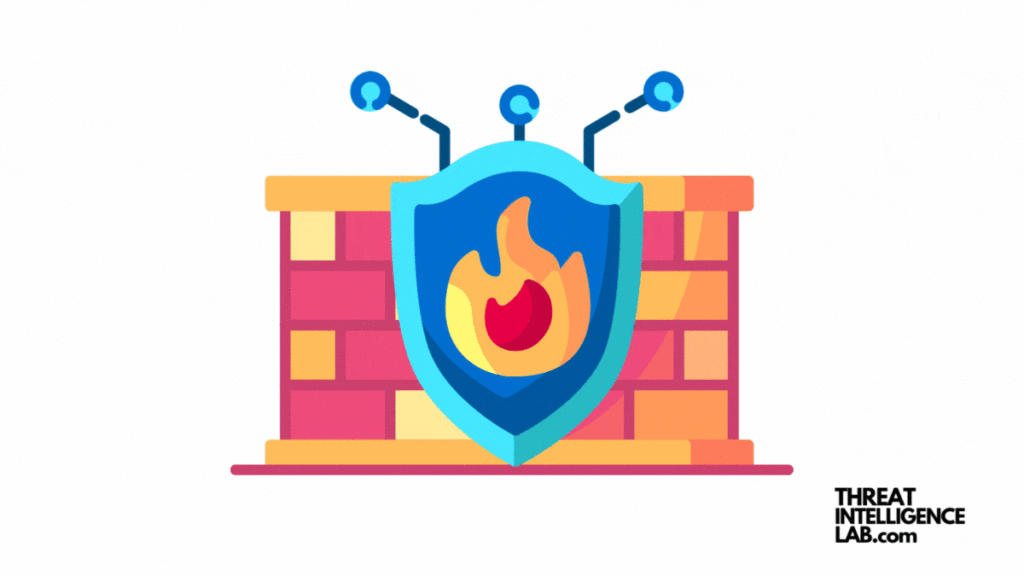Your cart is currently empty!

Responding to a Potentially Compromised Firewall
When you suspect that your firewall has been compromised, it’s crucial to act swiftly and effectively to secure your network. This guide outlines the steps network engineers should take to respond to such a security incident.
Why Didn’t My EDR Protect My Firewall?
Some people think EDR includes firewalls. But firewalls don’t have EDR software, even if they have IPS.
Let’s take a closer look.
EDR Systems
EDR is designed to monitor endpoints such as computers, tablets, and other devices that access your network.
It uses continuous monitoring and collection of endpoint data to detect advanced threats, provide alerts, and offer response recommendations.
EDR systems are installed as agents on these endpoints and operate by analyzing files, processes, and activities within those devices.
Firewalls
Firewalls are network security devices that monitor incoming and outgoing network traffic and decide whether to allow or block specific traffic based on a defined set of security rules.
Their primary purpose is to establish a barrier between your internal network and incoming traffic from external sources to prevent malicious or unnecessary network traffic.

The misconception
The misconception might arise from a misunderstanding of where security functions are applied:
- EDR does not operate on firewalls because it is specifically designed for endpoints. Firewalls, on the other hand, manage network traffic at the perimeter or within the network and do not host EDR agents.
- Firewalls do not typically have EDR capabilities because their role is different. While modern firewalls (especially next-generation firewalls) have advanced capabilities like intrusion prevention systems (IPS), deep packet inspection, and others, they do not offer the same type of detailed, endpoint-specific threat detection, and response as EDR solutions.

Responding to a Potentially Compromised Firewall
Identify and Confirm the Compromise
Start by verifying whether the firewall has been truly compromised. Look for signs like unusual outbound traffic, unauthorized configuration changes.
Isolate the Affected System
Once you confirm a compromise, isolate the affected firewall from your network to halt any potential lateral movement of threats. This step involves redirecting traffic and temporarily disabling remote management while keeping critical business functions online.
Investigate and Identify the Vulnerability
Understand how the breach happened. This involves deep log analysis and cross-referencing with known vulnerabilities and recent security patches.
For example, if dealing with a situation like the CVE-2024-3400 exploit, check if the affected versions match those reported vulnerable and understand the exploit used.
Implement Immediate Protective Measures
While working on a permanent fix, apply temporary measures to mitigate the risk. This might include tightening existing firewall rules, updating intrusion prevention signatures, or temporarily blocking certain traffic types.
Update and Patch
Patch the compromised system as soon as the appropriate updates are available. Regularly updating your systems is a key defense strategy against known exploits and vulnerabilities.

Restore Systems
If the integrity of data or configurations has been compromised, restore from the last known good backup. Ensure these backups are verified for integrity and are free from compromise before restoration.
Enhance Monitoring and Logging
Post-incident, enhance your monitoring and logging to detect any signs of persistence or further attempts at intrusion. Adjust your logging levels to capture detailed data about network activity and firewall health.
Review and Learn
Post recovery, conduct a thorough review of the incident. Analyze how the breach was detected, the response effectiveness, and what could be improved. Use these insights to strengthen your network against future attacks.
Regular Security Audits
Conduct regular audits of your firewall configurations and overall network security posture to ensure compliance with best practices and identify any potential vulnerabilities before they are exploited.
Stay Informed
Keeping up-to-date with the latest security advisories and threat intelligence is vital. Awareness can drive proactive defenses, preparing your network to fend off attacks before they occur.
